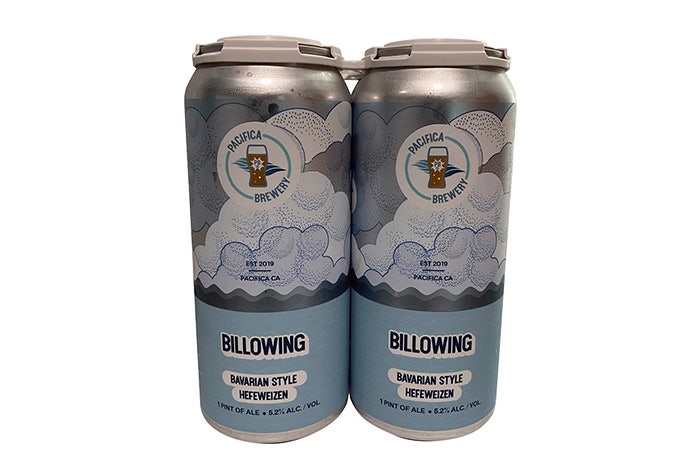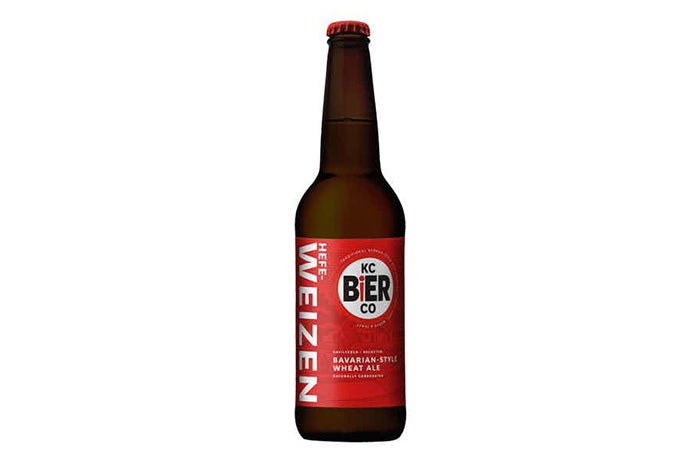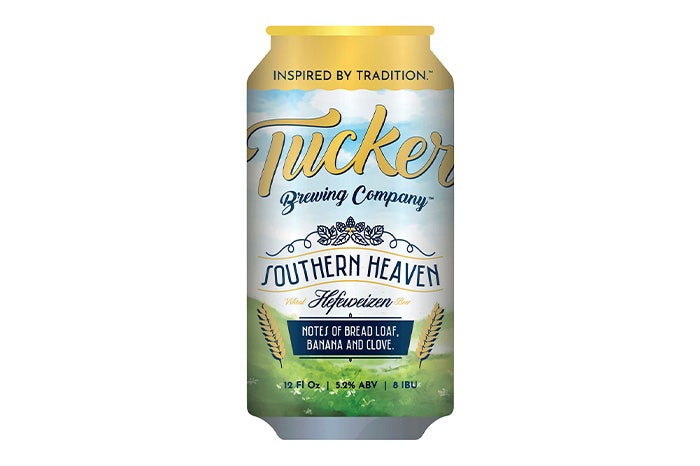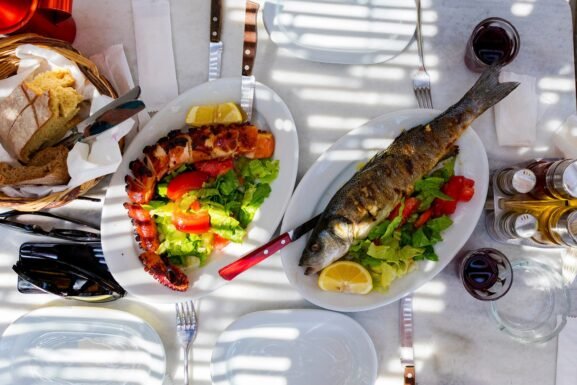The Best Hefeweizen Beers to Drink Right Now
There was a story, that has since been debunked, that in the early days of Oregon’s Widmer Brothers Brewing, a sales rep had a sneaky approach to selling beer. They would buy a round of the company’s hefeweizen and pay a server to walk a tray of the hazy yellow beers through a crowded bar.
We drink with our eyes first and the sight of a tall glass, capped with a foamy head and garnished with a lemon wedge on the rim, certainly seems like an appealing sight for curious customers. Even if that bit of marketing never happened, a properly made and served hefeweizen is certainly a marvel.
And if you’ve never sipped on this type of beer—it’s like sunshine and summer in a glass. When Widmer Bros. introduced their signature beer in the 1980s, selling hazy, aroma-forward beer was a tough sell to American drinkers accustomed to clear, almost neutral, lagers. Brewed with wheat and pilsner malt, a low amount of hops and a yeast strain that prizes spicy and fruity esters, it’s not a beer for everyone. But it should be.
What Is Hefeweizen Beer?
Hefeweizen is a German-style ale that is comprised of at least 50% wheat and is fermented with a yeast strain that imparts aromas of banana, bubblegum and clove. Hazy golden yellow in appearance, it contains a modest alcohol-by-volume of 4-7%.
Hefeweizen is a classic style of beer, but it’s experiencing a bit of a modern resurgence thanks to an unlikely ally. The rise of the New England-style IPA, which is known for its hazy or murky appearance, has helped other unfiltered beers, like hefeweizen, find an audience with a younger crowd.
“A lot of people would have avoided hefeweizen five or 10 years ago because of how it looks,” says Craig Rowan, the head brewer of Altstadt Brewery in Fredericksburg, Texas.
What Does Hefeweizen Beer Taste Like?
Hefeweizen is a wheat-forward ale that is also brewed with pilsner malt. This gives it a medium body with a sweet, sometimes light earthy spice flavor. The main characteristics come from the yeast, which imparts aromas and flavors of bubblegum, citrus, clove and banana.
Altstadt Brewery recently won gold for its hefeweizen at the World Beer Cup and Rowan says the recipe they brew is faithful to tradition: unfiltered, wheat-forward and with classically hefeweizen aromas.
“If you close your eyes and inhale, you’re especially going to get the clove aromas,” he says. “The style is a relaxing, chill-out beer. In Bavaria, this is what they drink on a morning coffee break.”
That said, hefeweizen is a polarizing style. “I happen to be magnetized by it,” says Todd DiMatteo, owner and brewer of Good Word Brewing in Duluth, Georgia. “The beautiful esters and the fluffy head, the subtle sweetness from the bit of sugar left over from fermentation and the lack of hop bitterness leave the beer somewhat out of balance—but true to its nature.”
While some brewers might choose to add fruit purées to their hefeweizens to boost the yeast-derived banana and clove aromas, most choose to go the traditional route. This includes letting the tried-and-true ingredients shine. Other brewers have added generous amounts of hops to hefeweizen recipes, which push them closer to the White IPA-style of beer.
Hefeweizen Beers to Try
Ayinger Bräuweisse (Ayinger Brewery, Merchant du Vin, WA)
94 Points Wine Enthusiast
Graham cracker on the nose mixes with assertive allspice and clove. The spice notes intensifies with each sip but never becomes overpowering, just loud on the palate. Fruity sweetness and a soft wheat character enter mid-palate and stay until the finish. A jaunty sipper that has fun with tradition while appeasing modern palates. —J.H.
$7.99 / 16 oz 4-pack
Total Wine & More

93 Points Wine Enthusiast
Fruity forward on the aroma, this smooth, almost silky hefeweizen stands out in a number of different ways. While it offers a touch of banana peel, and ground glove on the aroma, a delightful flavor of a just-cut perfectly ripe pear emerges with the first sip and sticks around to the last. Brewed with local malt, the soft wheat is delicate and not dampened by the medium carbonation. Poured into a glass it’s hazy golden with a low head, but look quick as the ale will soon be gone. #29 Top Beers 2022 —J.H.
$16.99 / 16 oz 4-pack
Total Wine & More

90 Points Wine Enthusiast
With many of the traditional hallmarks of the style, this feels familiar and friendly from the first sip. Graham cracker, fruity, ripe banana peel, and baking spice. Decocted in a traditional manner and naturally carbonated, this is one to enjoy in any setting, but especially on warm afternoons where liquid refreshment is needed. —J.H.
$10.99 / 12 oz 6-pack
Total Wine & More

84 Points Wine Enthusiast
Caramel and bits of spicy clove mix well in this deep orange verging on brown weizen. A low head, a touch of sweetness on the finish, and whiffs of toffee. Visually and on the flavor side, not what one thinks of with a hefeweizen, but works in a pinch. –J.H.
$12.49/ 12 oz. 6-pack
Total Wine & More
FAQs
Is Hefeweizen a Wheat Beer?
Yes. Hefeweizen should be made with at least 50% wheat, although some brewers will go higher. The rest of the grain bill is traditionally rounded out with pilsner malt. It’s fermented at low temperatures, with a yeast strain that is prized for its banana and clove aromas.
What Is the Difference Between Hefeweizen and Pilsner?
Hefeweizen is a fruity and full-bodied ale, with an emphasis on yeast. Pilsner is a lager that is typically crisp and clear.
How Do You Serve Hefeweizen Beer?
Hefeweizen is best served in a 20 oz weizen glass that is tapered towards the bottom and more rounded or bulbous towards the top. This allows for a concentration of carbonation near the base and room for a generous head and aromas to be released near the opening.
Some brewers will serve a hefeweizen with a lemon wedge on the rim of a glass. Others have taken to garnishing the style with an orange slice. Fruit is a personal preference and optional.
What Is the Best Hefeweizen Beer Food Pairing?
Rowan believes that hefeweizen, because of its unfiltered nature and high yeast presence, is best suited for brunch. He suggests pairing it with eggs Benedict or high-protein salads.
“Having it early on or in the middle of the day is just right,” he says. “It doesn’t weigh you down, it quenches thirst and with its citrusy nature, can be a great substitute for a mimosa.”
Why You Should Trust Us
All products featured here are independently selected by our team, which is comprised of experienced writers and wine tasters and overseen by editorial professionals at Wine Enthusiast headquarters. All ratings and reviews are performed blind in a controlled setting and reflect the parameters of our 100-point scale. Wine Enthusiast does not accept payment to conduct any product review, though we may earn a commission on purchases made through links on this site. Prices were accurate at the time of publication.
Published on May 29, 2023


